Do-it-yourself balcony glazing
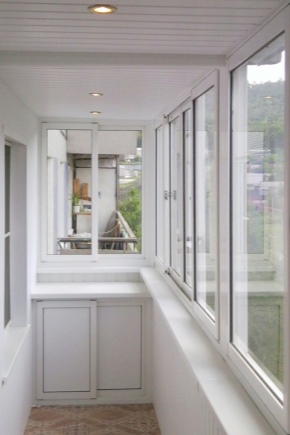
The balcony is a multifunctional space in the apartment. Over the past couple of decades, it has evolved from a pantry for winter things, grandmother's compotes and obsolete items that the hand did not raise to throw out into a full-fledged part of the living space. Of course, this only applies to closed-type options. If it is still blown by all the winds and is regularly covered with knee-deep snowdrifts in winter, the situation will be saved by glazing the balcony with your own hands.
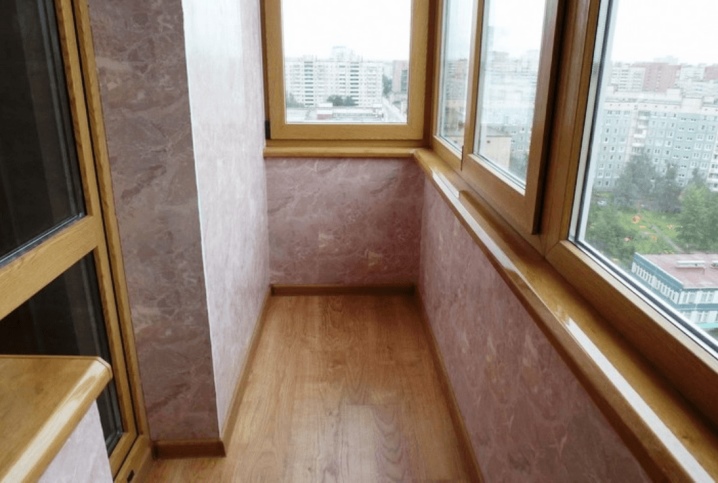
Views
The glazed balcony allows you to competently optimize the additional square meters in the apartment, turning it into a study, a mini-dining room, a dressing room, a sports ground, a workshop for creative family members. You can set up a winter garden in it or equip an area for your favorite pet.
It is quite possible to perform glazing on your own, but you need to take into account some of the nuances of the work.
Firstly, it is important to figure out what is the difference between a balcony and a loggia. Many apartment owners confuse these concepts, but meanwhile the types of glazing of the loggia differ from the types of glazing of the balcony. The glazing of the loggia is simpler, since it is bounded on both sides by walls - it is located "inside" the dwelling. A balcony is a structure protruding from the wall of the building's facade. It "hangs" above the ground and is taken out of the main square.
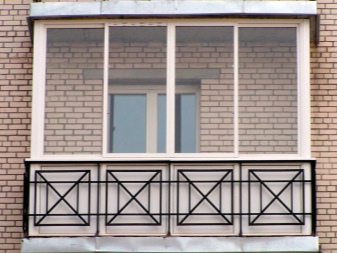

Secondly, you need to decide on the method of glazing - cold or warm.
The cold one consists of a single layer of glass and a lightweight frame. This method provides relative sound insulation, protects the room from dust, wind and sunlight, if the glass is covered with a UV filter, but does not keep heat. It is suitable for arranging a summer kitchen on the balcony, a temporary bedroom or study, and in winter - for storing food in the cold.
Warm glazing assumes a more complex, heavy and reliable design. And more expensive. It consists of window frames with double seals and double-glazed windows, which provide the ability to maintain room temperature on the balcony at any time of the year and use it in a convenient quality.

Installation of warm windows requires more time and strict adherence to the conditions:
- Good thermal insulation and waterproofing. The ingress of condensation between the glasses is unacceptable, they will fog up and retain heat worse.
- The ability to provide natural ventilation of the room.
- The presence of an air circulation system between the balcony and the room.
Thirdly, it is necessary to study the legal side of the issue, when planning to make changes to the design of the premises. The balcony slab is designed for a specific load. Exceeding the permissible weight can lead to its collapse, and this is fraught with negative consequences.
Nowadays, it is quite easy to get expert advice and permission to improve such a plan, which were not foreseen during the construction of a house. It's easier to spend a little time studying the Housing Code before starting work than solving problems afterwards.

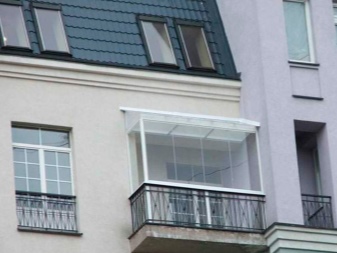
Popular types of glazing
The most common ways to protect a balcony from rain, wind, stratification of street dust, frost and visits of feathered guests are: sliding glazing, panoramic, with a carry-over, on a supporting frame.
Each type of glazing has its own advantages and disadvantages.
Simple (classic) glazing with a wooden frame and single panes refers to the cold method and is installed mainly in Soviet-style apartments. It protects from moisture, noise and street dirt, but does not differ in particular aesthetics and great possibilities.
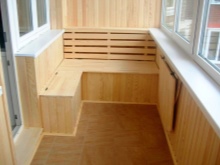
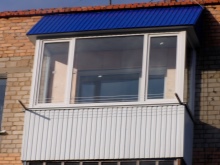
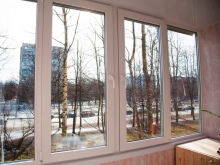
Sliding
The design is equipped with a special roller mechanism that allows you to easily move the sash and takes up a minimum of space. The mechanism works on the principle of guide rails: the sashes slide one after the other.
This type is not suitable for every balcony, specialist advice is required, however, for small balconies this is the best option. It does not take up half an extra centimeter, saves space, protects against insects, dirt and precipitation.
The negative aspects include the fact that roller mechanisms may not withstand the harsh conditions of the Russian climate in the winter season. If they freeze, it will be impossible to open the windows. The design implies a single glass, so it will be cold in the room at sub-zero temperatures.


Panorama
This type of glazing implies the absence of any frame. Along the top and bottom guides with grooves are installed, into which glasses are inserted (using special fasteners). Glass railing occupies the entire space from floor to ceiling, providing a beautiful view from the balcony at any time of the year. In this case, the sections are glazed in various ways: sliding, swing, folding.
For panoramic glazing, glass of special strength is used, with a special coating to neutralize thermal radiation. It looks good and can provide maximum noise isolation. Has a number of disadvantages:
- At high temperatures, glass heats up and heats up the room. During installation, blinds must be provided. In the cold season, it retains heat poorly.
- The surface requires frequent washing, since dust is clearly visible on it, water streaks are visible after rain.
- The structure as a whole is significantly heavier and more expensive than any other material.
- Installation is risky and requires high professionalism, so it cannot be done independently.


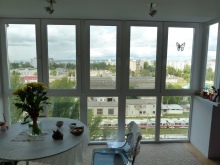
With a takeaway
The essence of the method is that steel profiles are welded to the balcony parapet, on which a wide window sill is fixed. It is the base that holds the aluminum or plastic structure for the balcony glazing. Such glazing is suitable for narrow and small balconies with a solid parapet.
Modified balconies look beautiful (especially if a greenhouse is placed in them), expand the space practically and visually, and have a functional wide window sill.
The disadvantages include the fact that the own weight of plastic structures is quite large. It is necessary to correctly assess the current operational state of the slab and parapet. Aluminum frames are lighter, but they keep heat worse. It will be cold on such a balcony in winter.
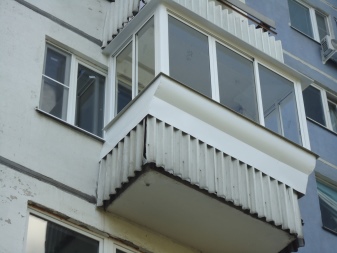
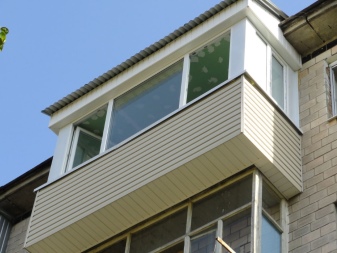
With supporting frame
The most difficult method, which involves serious changes in the appearance of the outer side of the balcony and requires a lot of time and several pairs of working hands. At the same time, it is the best, since it allows you to glaze a completely open balcony, which does not even have a visor, and turn it into a warm living space for the next 15-20 years.
This Soviet-style glazing is popular - despite its laboriousness and high weight. Its advantages:
- Welded steel frame is cheaper than other materials. At the same time, it is distinguished by greater strength and wear resistance.
- Ordinary bathroom enamel is suitable as a paint coating. It gives a beautiful lasting color, shine, reliable protection against corrosion, and costs much less than PVC.
- Possibility to install a visor.This will not only turn the balcony into a living space, but also allow you to distribute the load over the upper floor and less load the balcony slab.
- Can be replaced with a parapet frame. It is easier to install the frame, it costs less, and in appearance is not inferior to a panoramic balcony in an elite house.
- The frame can be easily insulated with plasterboard and foam.
- Any type of window can be inserted - from traditional wood to solid glass.
- Due to the strength of the frame, only the wind load falls on the glass, so they can be made of any width.
- The problem of the old parapet does not matter. It can be removed, and the supporting frame can be made lower or higher than the previous level.
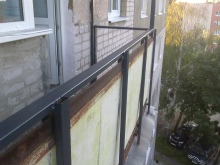
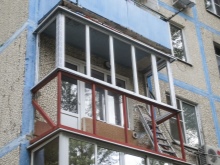

Materials (edit)
The balcony glazing system is represented by a set of casements for windows, a window sill, heat-insulating material (most often it is foam), external ebbs and interior decoration.
The choice of material directly depends on the purpose of the balcony room and determines the final cost of the changes made. If the balcony is used as a place for drying clothes and storing preservatives, it makes sense to give preference to budget materials: lightweight aluminum or duralumin frames and single glass. Such a balcony will not be insulated, and the difference with the subzero temperature outside will be no more than 6-7 degrees.
If you plan to arrange an office on the balcony, a playroom for children or a place for receiving guests, you should choose more reliable and expensive materials. It will be "full" or "insulating" glazing, which will allow the balcony to be used as a living space at any time of the year, or to combine it with the room by dismantling the wall between it and the balcony.
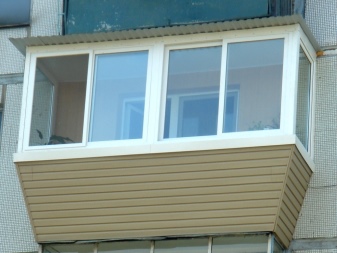
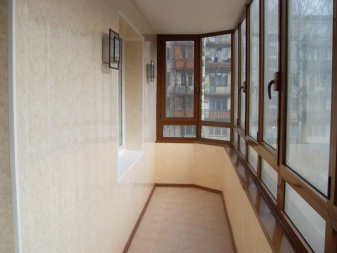
Plastic frames
They are convenient in that they do not require additional efforts to insulate the balcony. In the case of a low-budget renovation, simple light PVC frames and single glass, massive windows with double-glazed windows are suitable. For better tightness, you can foam the cracks.
The choice of the type of double-glazed windows determines the ultimate goal of the repair. With any technical characteristics that meet the needs, the basis of windows of this type will be a frame-profile made of polyvinyl chloride. The kit includes all the necessary fittings, as well as a single-layer or multi-layer sealed glass unit.
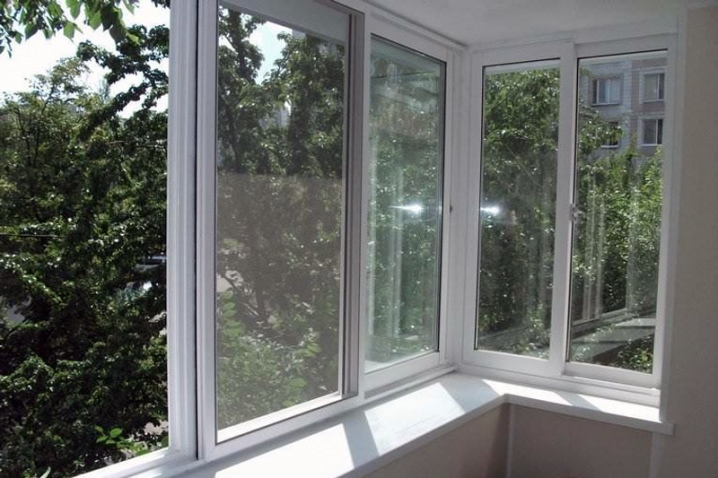
The frame (static element) is mounted in the window opening, and the "filling" can be chosen at your discretion: in which direction the sash will open, whether there will be a window with an impost (transverse slats along a horizontal or vertical line), what will be the strips on which the glass unit is attached what glass the windows will be made of.
The most common material for the production of insulating glass units is four-, five- or six-millimeter glass. In a separate group, it is worth highlighting "triplex" - double glass with a layer of transparent tape.
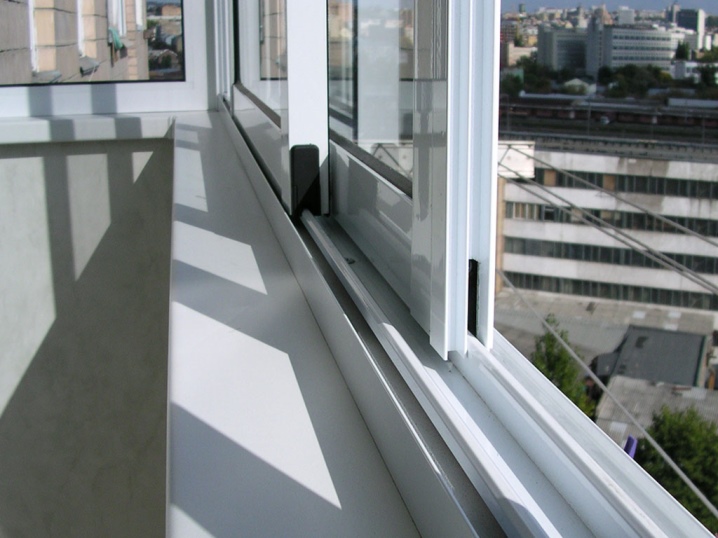
A double-glazed window can be single-chamber or double-chamber - depending on the number and parameters of the chambers.
The PVC frame from the inside also consists of a number of bridging compartments (stiffening ribs). Their purpose is to create air-filled segments in the profile cavity. The more compartments, the higher the heat resistance.

The number, volumes and placement of air segments inside the profile are strictly defined, since some of them are necessary to ensure rigidity, some provide water outflow, and some are needed to fix fittings.
The level of thermal protection directly depends on the thickness of the glass unit and the distance between them. The warmest will be the balcony, which is glazed with double-glazed windows of different thicknesses and at different widths from each other. An important role is played by the seals, which are laid along the edge of the glass unit.
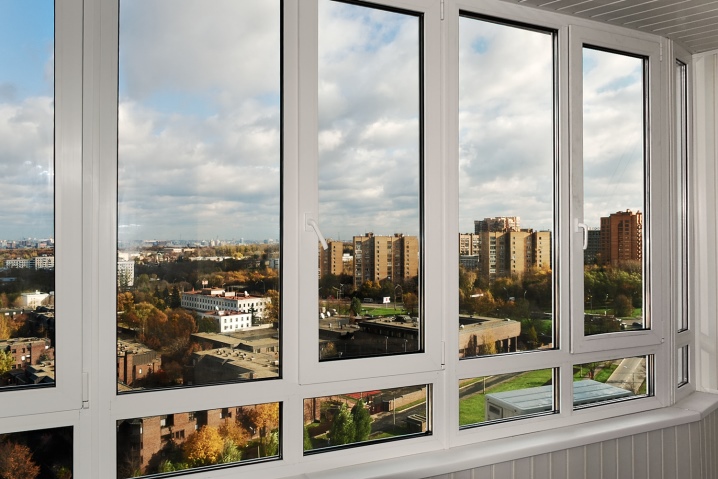
As for glass, its properties may be different:
- reflective reflects the sun's rays;
- reinforced - fire resistant;
- hardened - shockproof;
- colored absorbs solar energy;
- laminated provides excellent sound insulation (another feature of the "triplex" is that with a strong impact it does not break into fragments, but cracks and remains inside the film).

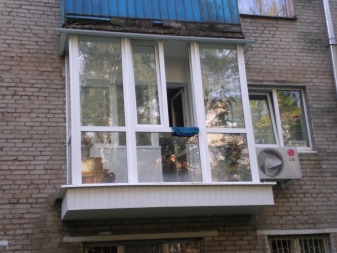
Wooden frames
Their appearance has undergone significant changes over the past few decades, but the trend towards installing wooden frames continues to grow. They have a small number of advantages when compared with the same PVC profile: beautiful, natural, environmentally friendly. However, there are not very many shortcomings either - they require high-quality installation and good care. The tree must be treated with special protective solutions and paints, otherwise it will quickly lose its appearance, begin to rot and crumble.

Any glass can be inserted into wooden frames. A cold single without a seal will make the balcony beautiful, but unsuitable for use in the winter season. Expensive insulated double-glazed windows with a seal will solve two problems at once - both aesthetically and practically.
Stained-glass or pseudo-stained glass looks beautiful in wooden frames. You can order it from the master or do it yourself. This can be done using a printed stencil and ordinary acrylic paints on glass. If you don't have the time or desire to be creative, you can purchase a ready-made film stained glass window on any topic in the store.

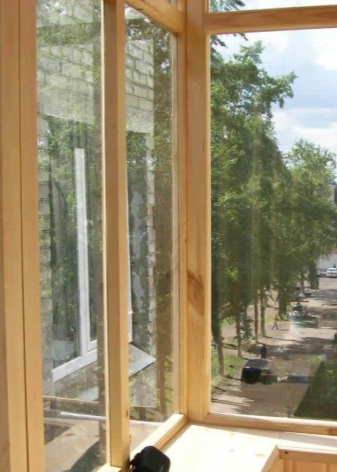
Aluminum frames
Aluminum profile is the most current option for balcony glazing. This is due to the fact that in most old houses the condition of the balcony slab and parapet leaves much to be desired. It is not very safe to install a heavy steel frame on them, and aluminum is light enough and does not give such a load on weak floors.
Convenient aluminum profile on small balconies. It allows you to save or even expand the space by several tens of centimeters (due to the frame with an extension). Frames made of this material look aesthetically pleasing, they are quite durable. If you paint them with protective enamel, the service life will increase significantly.
The most important advantage is that it lets in much more light into the room than a profile made of wood or plastic. And this is especially important if the balcony is used as an additional living space, and not as a second storage room.
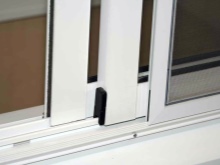
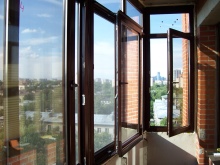
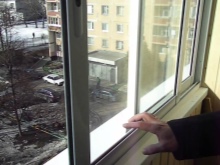
Precautionary measures
Getting started, first of all, you need to think about how to minimize the risk of injury, your own and passers-by below. A miniature home coffee shop in the spirit of Montmartre is, of course, good, but safety is paramount. First of all, it is provided by a safety belt. The most reliable is considered to be an industrial one, but a high-quality sports one is quite suitable for one-time work.
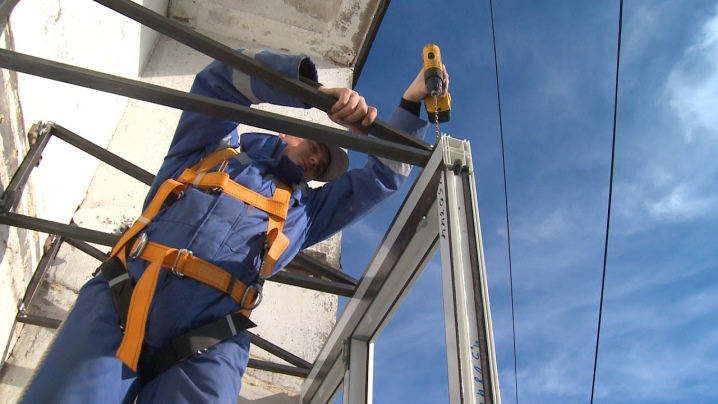
When choosing a belt, you need to pay attention to the length of the safety halyard (cable). It should be neither too short, so as not to impede the work, nor too long, so that a traumatic jerk does not occur when falling. The optimal length is 2.5 meters.
It is also necessary to take into account the information on the product certificate. The harness and carabiner must be able to withstand a load of up to 400 kg. You should not purchase a product without specifying this information and uncertified products.
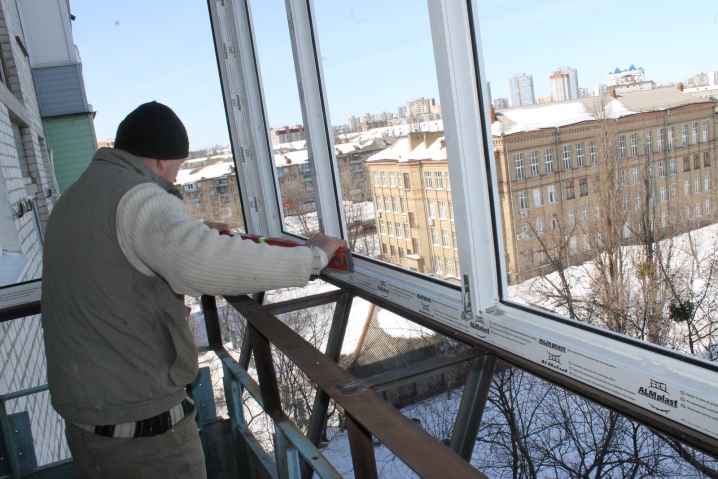
At the time of repair work, the safety halyard is fixed with an anchor pin with a metal collet. The collet must be firmly mounted into the main wall (at least 15 centimeters deep), and screw the pin into it until it stops - using a screwdriver or a pry bar.
“With your own hands” does not mean alone. The glass is not only fragile, but also quite heavy, therefore it is recommended to perform independent glazing of the balcony with at least one partner.
When your own safety is assured, it's time to take care of others. It is unlikely that compensation for damage caused to health from a mount that fell on a neighbor's head is included in the estimate of the cost of repairing the balcony. The area below should be protected with bright construction tape. Neighbors from the upper and lower floors should be warned about the planned works.
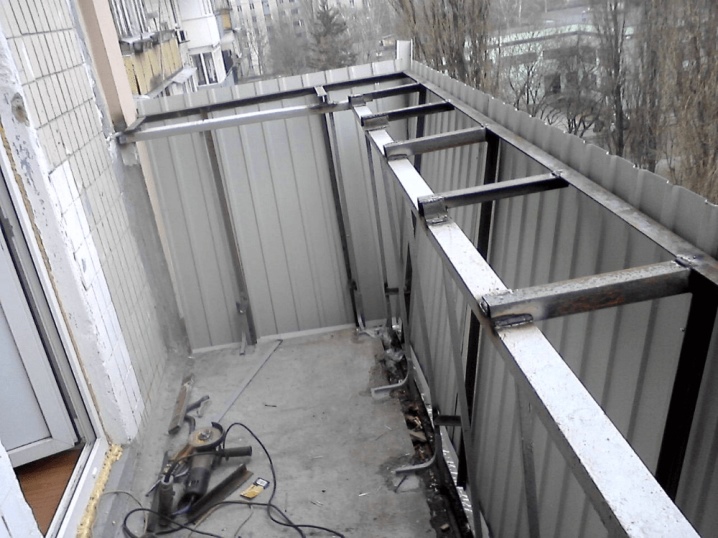
Preparation
Balcony glazing requires a careful approach. Preparation for repair work is carried out in stages:
- Cleaning. First of all, you need to take things out of the balcony, remove the blinds (if they have been installed), remove everything that may interfere with the work.
- Assessment of the operational state. When the balcony is not cluttered up, it must be carefully examined from the inside and outside - for damage, decay, chipped concrete, cracks, rot. If the condition of the slab and parapet is satisfactory, you can proceed to the next stage.
- Elimination of defects. During the inspection of the balcony, problems may be revealed that were made during the construction of the house. Before installing the profile and glazing, it is recommended to level out any irregularities and bevels that may hinder work.
- Security.
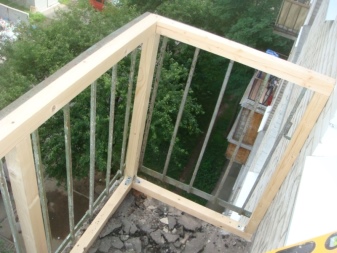
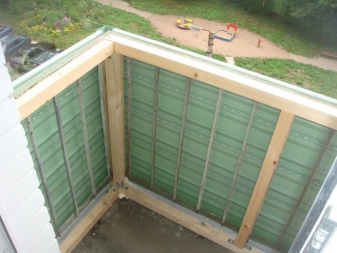
How to glaze with a wooden structure: step by step instructions
Self-glazing of a balcony with a wooden structure implies a sequence of steps:
- Surface preparation for work. When the balcony is cleaned, inspected and tidied up, it's time to get rid of all internal and external coatings. Then you need to remove accumulations of dust and other contaminants.
- Measurements. The accuracy of measurements of window openings determines how well the frame will fit to the base, so it is important to be extremely careful and double-check the resulting values.
- Installation of a wooden "box". The "box" consists of wooden beams that form the base for the frame. It is fixed at the level of the existing balcony railings and the upper beam. Side rails are mounted to the left and right wall surfaces. All bars are secured with metal staples.
- Installation of battens for interior decoration of the balcony. If this step is provided for in the repair, it is carried out until the very glazing of the balcony. When the surface of the walls, floor and ceiling is sheathed with panels or clapboard, you can proceed to the installation of windows.
- Installation of frames. Before starting the glazing, the glass must be inserted into the frames and fixed. They are made to order (according to individual sizes), purchased ready-made or made independently - from profiled wooden beams with grooves.
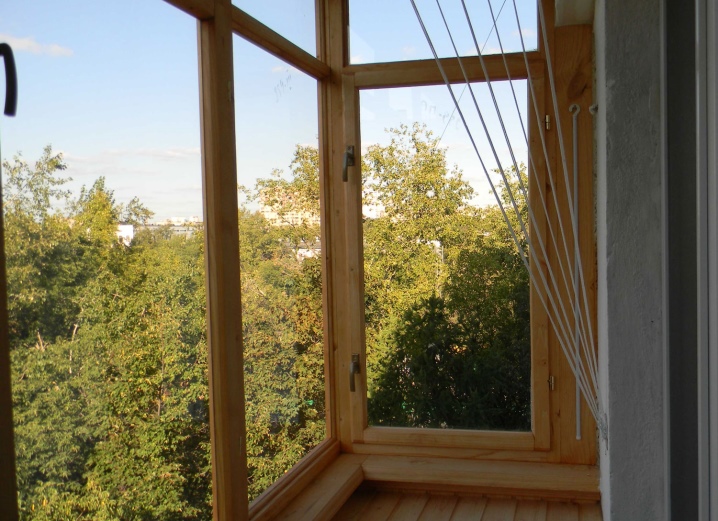
Glasses are inserted into these grooves, pressed with slats and fixed with nails on three sides.
- Treatment of cracks with insulating materials. Even with the most careful preparation, it is impossible to assemble frames with no gaps at all, like a good designer. There will certainly be gaps that need to be treated with tow or polyurethane foam.
- Installation of platbands. It is carried out after thermal insulation, in no case before.
- Treatment of wooden frames with protective agents. The moisture-proof coating is applied in 5-6 layers. The frame can then be repaired, painted, or left clean.
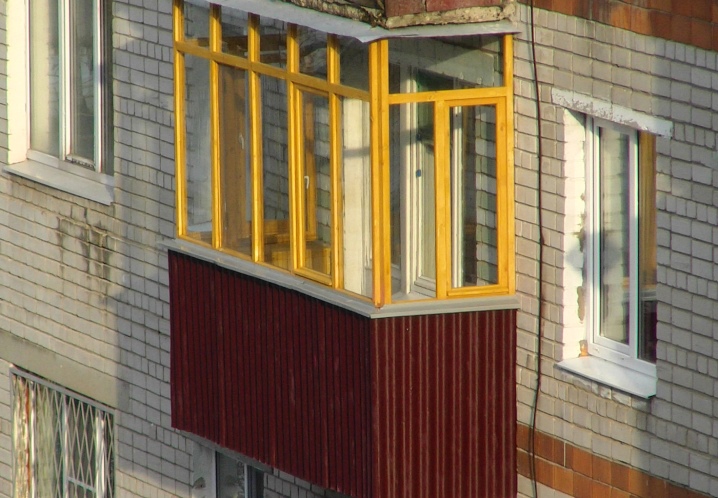
Installation of metal-plastic
The most accessible type of glazing without the help of a wizard. During the installation and installation process, you will need: a drill, screwdrivers, a hammer, a spatula, a knife, self-tapping screws, foam.
Algorithm of actions step by step:
- Rack blank. 10-15 fragments with an area of 4 by 4 cm, which are needed to align the line of the parapet and correctly align the windows along the horizon.
- Removing the glass unit from the frame. The manufacturer delivers a one-piece structure made of PVC and double-glazed windows, but before starting the installation of the frame, the glass must be removed, otherwise the frame will be heavy.
The double-glazed windows should be removed carefully, placing them in a row against the wall. For reliability, it can be moved with a soft cloth or thin foam rubber.
- Removing sashes from window hinges.
- Installation of the support profile. This is an obligatory element of the kit, necessary for the convenience of installing the window sill. It is only 20 mm high and cannot be installed without a stand profile.


To install the profile, you need to turn the frame 180 degrees, insert it into the groove, fix it on the underside of the frame with a wooden (not steel) hammer.
- Installation of frame mounts.Departing from each edge of the frame by 15 cm, fix the plates on the top panel - using a hammer and self-tapping screws with a length of 3 cm.
- Installation of windows. The most difficult moment at this stage is to fix the frames on the parapet. It is necessary to do this with assistants so that the frame does not "look" beyond the perimeter. It is important to take into account that self-tapping screws are not driven into the dowel, but screwed in.
After fixing the top level, the frame will be held securely enough. Then you can fix the rest of the sides by connecting them with self-tapping screws at a distance of about 6 cm.
The connected frames are leveled using a level and a plumb line.
- Treatment of crevices and gaps from the outside.
- Installation of the window sill.
- Installation of slopes and ebb tides. At the same stage, the window perimeter and joints are processed with silicone.
- Installation of double-glazed windows according to the instructions.
- Hanging sashes.
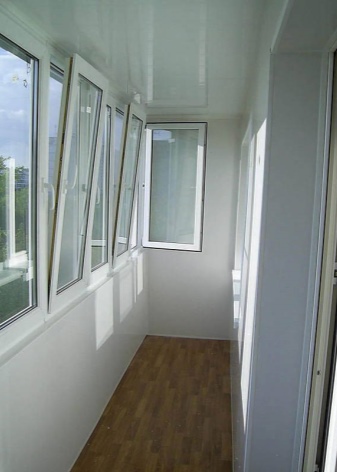
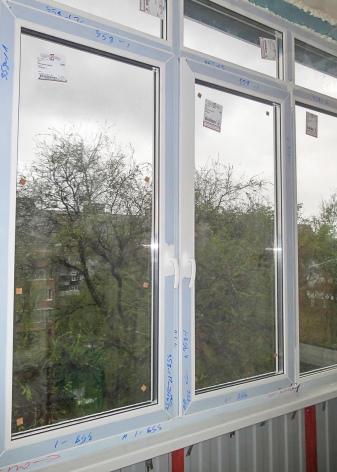
How to glaze a balcony with sliding windows, see the following video:
Frameless way
Aesthetic frameless glazing is chosen when it is necessary to let in a maximum of sunlight into the room. It is a sliding system made of impact-resistant glass (transparent, tinted or stained glass). There are no frames and partitions, and the glass at the top and bottom is attached to the metal rails.
A fixing tape is placed on the lower profile under the extreme sash, which is needed so that the opened sashes do not come into contact with each other.
Such a balcony can hardly be warm, because it will not work to fit the glass to each other without gaps. The only way to reduce gaps is with acrylic glass gaskets. They are included in the kit and are designed to be slipped over the edges of glass like covers.

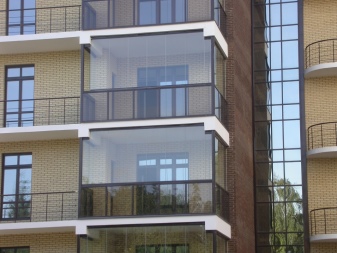
The system is equipped with rubber seals, which are laid from the outside - between the sashes and the aluminum profile. They are necessary in case of sleet and rain.
The system seems light enough, but at the same time it is very durable (due to thick glass) and perfectly protects against precipitation, wind, noise. The thickness of the glass is chosen according to the height of the balcony. At a height of over 200 cm, a thickness of at least 8 mm is required, at a height of less than 2 m, 6 cm is sufficient.The width of the flaps varies between 60-80 cm.
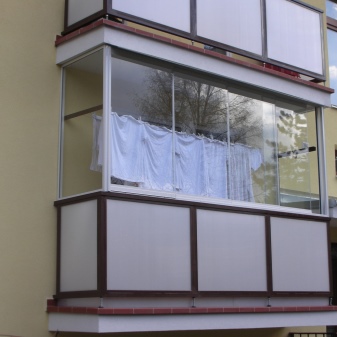
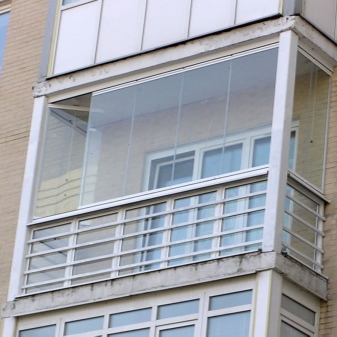
In conclusion, we bring to your attention a video that tells about the methods of economical glazing of a balcony.













The comment was sent successfully.